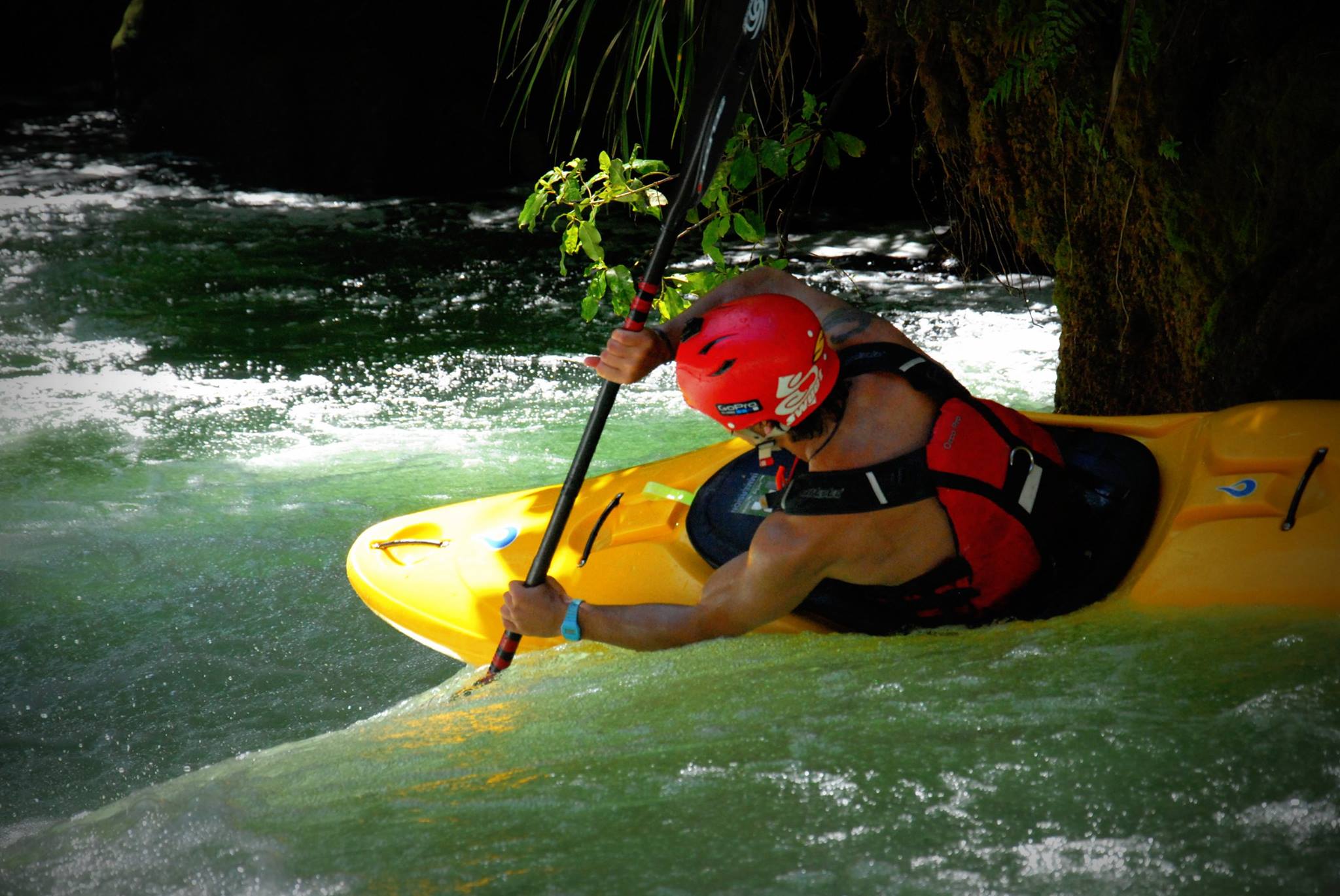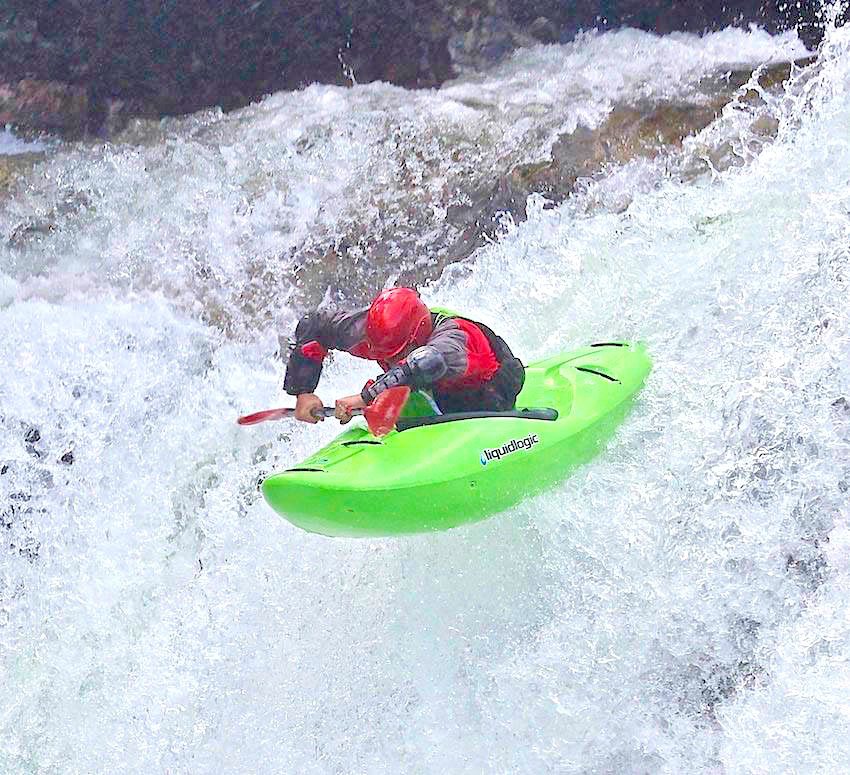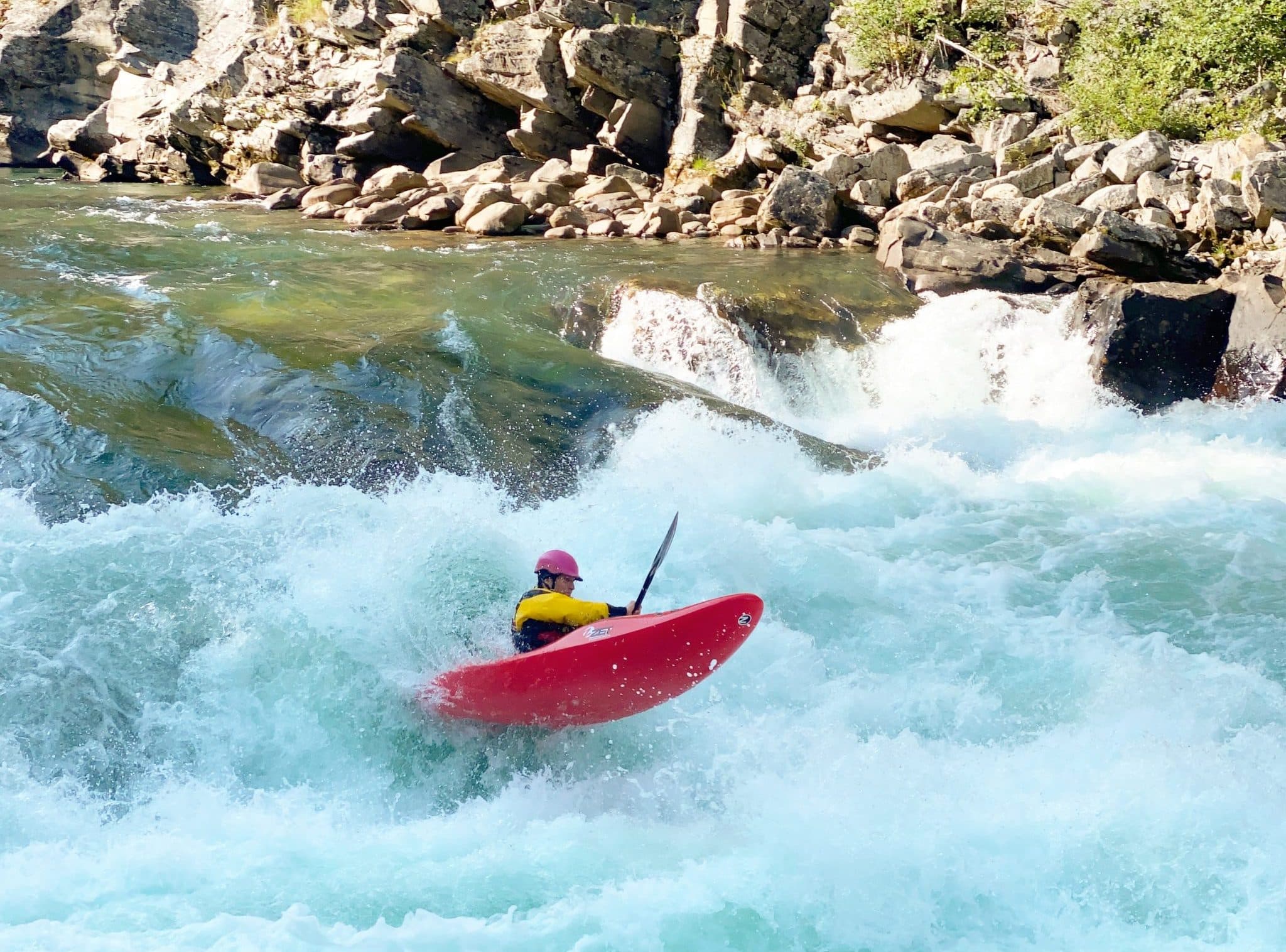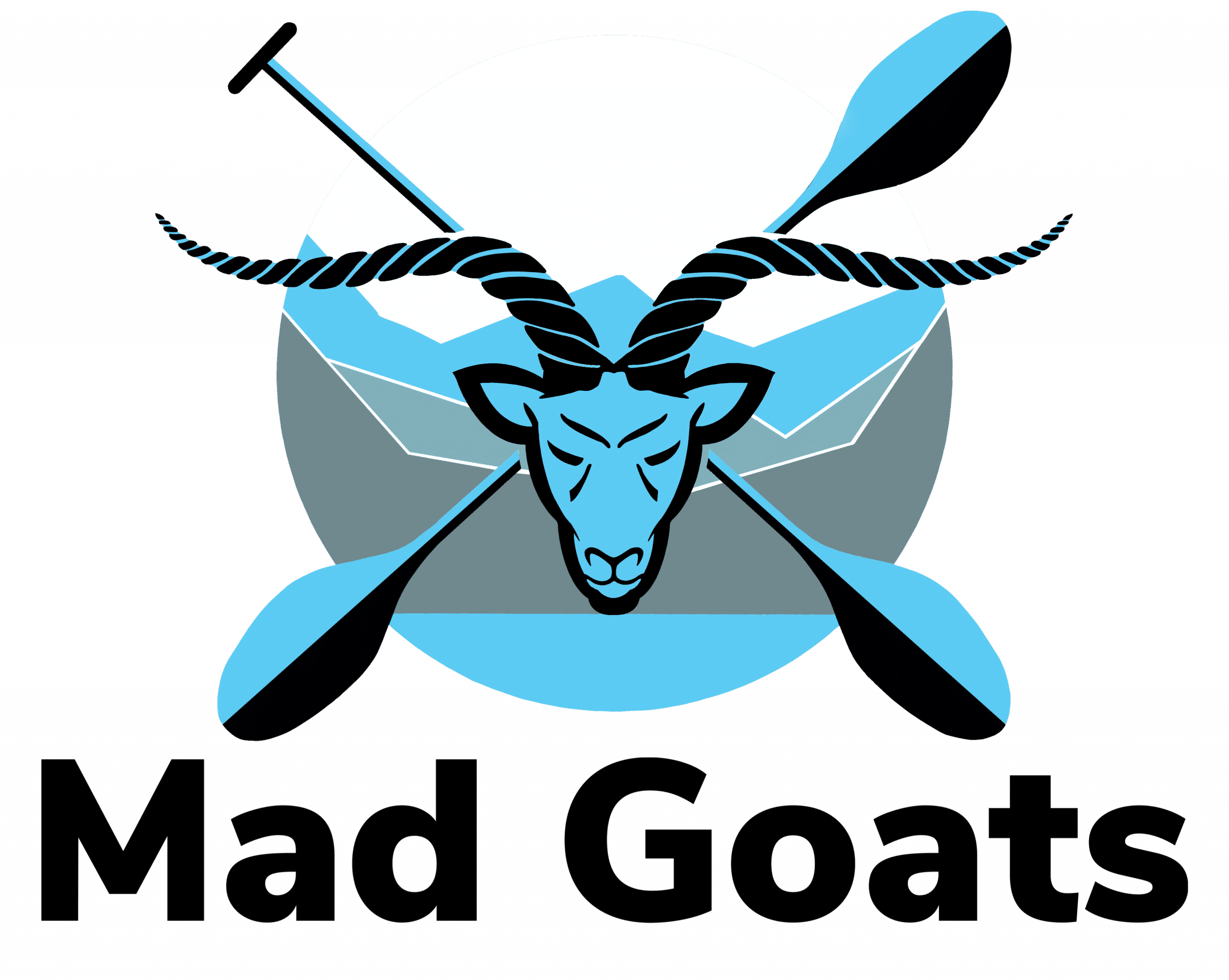
The boof stroke is probably the coolest and most useful whitewater kayaking stroke you can learn, especially when moving up to grade 4 river. It will keep you high and dry, boosting your way out of drops and holes. This ability will allow you to move from grade 3 to grade 4, in a safe manner. The sheer joy of flying through the air and skimming out of a drop is hard to describe; so instead, let me try and teach you this wondrous stroke so that you can do it yourself! – make sure you check out the demonstration video below!

3 simple steps to nailing the boof!
1. Set up
- Place blade in the water at the front of your kayak
- Make sure your stroke is vertical; held with a high top hand (power and space for movement)
- Look through your arms so you can see where you are going; this is your boofing window
- Get your boat on edge if the feature allows it. The water needs to be deep enough so your edge doesn’t catch the riverbed. Edging will allow your body to wind up, thus getting more power out of the movement.
- Time your stroke so it is not taken too early or too late. Take your stroke at the highest point of the feature, unless the lip requires a late boof (e.g. a sloping drop).
2. Taking the stroke
- Pull on the blade starting from your bow and finishing just behind your hips. At the same time thrust your hips forward, which will bring your body upright or leaning back slightly.
- Now bring your body forward again. Doing so will lift your knees towards your chest, bringing the bow of the kayak up.
- Transition your kayak from the edge you started on to either flat or to the opposite edge (e.g. if you are boofing into an eddy)
3. How to Land
1.Have your paddle either across your boat in a balanced position, ready to support on either side on landing (active blade). Alternatively, have your stroke ready on the opposite side you boofed on, ready to pull yourself forward on landing (some drops/holes are sticky and require extra measures to prevent being sucked back in).
2. f you fear a hard landing you can tuck your head to the side, lean forward and have your forearm in front of your head to act as a buffer against your head hitting the bow of the kayak.
3. If you boat is too flat you can lean back before landing to bring your bow back down. Then on landing push your hips forward and bring your body forward to stomp your kayak out of the drop. Doing this will mean that your bow takes most of the impact rather than your back and will scoop your kayak out of the drop (retaining your speed). It is a good idea to land high drops (4m and higher) with your bow angled down between 10-45 degrees.
4. Once you have landed, keep your blade in the water for stability to keep your kayak tracking straight.
How to practice the boof stroke on the river
For power and timing:
Practice boofing at the top of a wave. If you time the stroke right your kayak should launch out and land in the trough behind the wave. If you hear a smacking sound as your boat reconnects with the water, then you are doing it right!
For edge transition:
Practice boofing into steep eddies. Doing so will not only get you slick at controlling your edges but also holding and timing your stroke.
For control in the air:
For this, you need to find a drop! Start with an easy drop between 1 and 3 metres. Remember to come into the drop relaxed and focused. The only way to learn how to control your body in the air is airtime – so get flying!
Different types of boofs
Shallow lip:
- No edge required
- Grab the lip with your paddle
- Pull your knees to your chest, lifting your bow.
Rock-slide:
- Paddle hard up onto the edge of the rock, sliding up its face and using the lift to fly out from the drop – love these moves!!
Low, deep and sticky drops:
- Deep vertical stroke
- Edging onto stroke can help
- Usually a late boof; don’t pull on stroke until you see your landing
Landing from highish drops (3-10m):
- Time stroke appropriately to shape of the drop (i.e. vertical or sloping lip)
- Flatten kayak out so you are flat in the air
- Pull knees to chest, bringing the bow up
- Stomp nose down on landing if the drop is high, or doesn’t have a lot of whitewater at the bottom (landing completely flat can injure your back)
- Land with bent spine
- Have paddle stroke ready for stability
- Tuck your paddle tightly to the side of your kayak if you are worried about your shoulders (optional)
- Turn your head to the side and have your forearm acting as a buffer between your boat and head (to prevent smacking head on your deck on hard landings)
Holes:
- Maintain speed and angle
- Reach over with next stroke to pull yourself through the hole
- Keep your weight forward to prevent back-looping
Boofing a lateral with a sweep stroke:
- Sweep the bow of your kayak up over the lateral and have your opposite blade ready to pull you through
- Tucking into your stroke (high drops)
- Try to have the nose of your kayak facing away from the lateral so that you can use your boof/sweep stroke on the opposite side of where the lateral is coming from, to simultaneously turn and lift the bow of your boat towards and over top of the backwash.

Tips
- Avoid hacking down in the water; you will expend all the strokes energy
- Try not to take “panic strokes” before taking a boof stroke; it will mess up your timing.
- Scout the feature so you are able to use the correct style of boofing (check above)
– Keep your boofing blade in the water behind you for extra propulsion and stability while in the air (active blade)
- Try to come into you boof from a bow-draw. This will teach you to combine strokes, making you a smoother & more energy efficient paddler. Also, it will allow you to control your kayak angle while coming into the boof, plus your blade will already be in the water generating energy.
- Land with a bent spine and with your kayak at an angle, so that your back doesn’t take the impact.
Ways to learn (or get better at) Boofing
- Checkout out our video below
- Sign up for a whitewater course with us
- Paddle with people who are better than you and that know how to Boof
- Practise, practise, practise – like you needed an excuse to go kayaking more 🙂
Thanks for reading, I hope it helped! Catch you on the water!
Tomas Hansson
Categories
- Akerselva kayak tour (3)
- Camping (4)
- Heidal / Sjoa (2)
- Hiking and Biking (2)
- Oslo (19)
- Oslo kayak tours (2)
- Sauna (8)
- Sea Kayaking (16)
- Stand Up Paddling (1)
- Våttkort course (5)
- Whitewater Kayaking (13)
